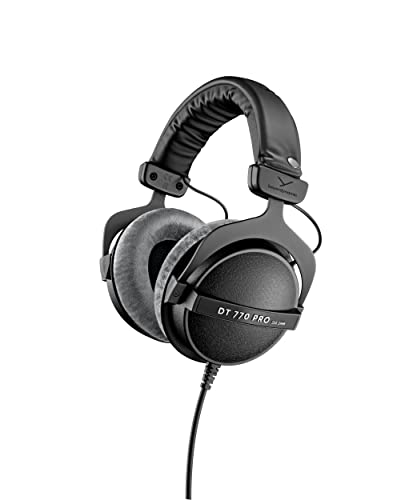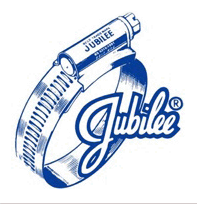5 Bluetooth Headphones Myths You Should Avoid
페이지 정보
작성자 Katherine, 이메일 katherine_bracker@uol.com.br 작성일24-01-13 17:19 조회884회 댓글0건신청자 정보
직책 , 주소 , 우편번호관심 정보
제품, 관심품목관심 정보
년간사용수량 , 카달록 필요관련링크
본문
 What to Look For in Bluetooth Headphones
What to Look For in Bluetooth HeadphonesBluetooth headphones transmit audio by using a wireless technology which utilizes radio transmission signals that have low power. These signals are converted to analog audio by the built-in DACs and then transmitted to headphone drivers to be output as sound waves.
 Before you can connect your Bluetooth headphones they must be "paired". The process of pairing creates an information link between the headset and the parent device.
Before you can connect your Bluetooth headphones they must be "paired". The process of pairing creates an information link between the headset and the parent device.Audio Quality
Bluetooth utilizes radio waves with a short range to transmit audio data, eliminating the requirement for wires. It can range up to 30 feet which is ideal to use around your home and keeps your music from cutting out as you move from room to room. It also helps to keep interference from other Bluetooth-enabled devices at the minimum, ensuring that your headphones don't get flooded with other sounds which can hinder your enjoyment of the music.
However, Bluetooth was not originally designed to be used for audio entertainment. It has a limited bandwidth, which makes it difficult to compress data to music files that are transmitted wirelessly. This may be fine for phone conversations, but it degrades the quality of your audio experience.
To combat this, certain headphones are equipped with aptX or aptX HD audio codecs that remove the need for data compression. This creates a more authentic and accurate representation of the original audio file, which allows you to listen to high-quality music over Bluetooth without losing. Spotify and Apple Music, among others, support these higher-quality Bluetooth codes.
The best Bluetooth headphones will at a minimum support an audio format that is basic like SBC. However there are many that will support more advanced audio formats to satisfy your needs for listening. If you plan to use your headphones to stream videos from YouTube or Netflix, choose headphones that support aptX Low Latency or aptXHD. This will allow the audio and video to sync, providing the most immersive listening experience.
If you're looking for the best bluetooth headphones that have excellent audio quality, the Sony WH-1000XM5 is the way to go. These headphones are a worthy winner of our Product of the Year award and offer a high-quality experience that competitors can't compete with. They have a clear advantage in noise cancellation too, and their app experience is among the best in its class. Bowers & Wilkins' Px7 S2 headphones offer a superior audio experience and a superior design if you are willing to pay more.
User-Friendliness
Wireless headphones are an alternative to corded headphones. Bluetooth is an established wireless technology that makes use of radio waves that are short-range to connect devices, such as headphones and music players. When using Bluetooth, a transmitter and receiver must be connected to a compatible source. The source encodes and transmits the audio signal to a Bluetooth chip which then broadcasts it over the radio waves to the headphones.
When the signal is received, it is decoded by the headphones' Bluetooth receiver and converted into an analog audio signal that listen to. The headphone's amplifier amplifies the signal to the appropriate voltage needed to drive the speakers and generate sound. The majority of Bluetooth headphones will have digital-to-analog (DAC) converters to ensure the highest quality playback.
The most modern Bluetooth headphones also have a headphone amplifier built-in to boost the output power to playback music more loudly and to reduce distortion levels. Most headphones have a microphone for hands-free calling, and some models support Apple's exclusive codec aptX to improve audio quality when streaming movies or podcasts.
Some wireless headphones come with internal data storage, allowing you to store up to a few gigabytes worth of music for easy playback without the need for an external audio device or connection. This is ideal for those who enjoy listening to a certain playlist or want to be untethered when working out. Transferring and updating songs from internal storage requires an internet cable. If your tastes in music change, then you will need to replace them.
The Bowers & Wilkins Px7 S2 headphones have been upgraded from their predecessor in 2020 and are now more luxurious than ever before, but they still provide a comfortable fit for long listening sessions, and a neutral and engaging sound that stands out in a competitive class. They provide a long-lasting battery and quick charging, and include aptX Adaptive and aptX HD for audiophiles who own devices that be compatible with these high-quality Bluetooth codecs. They're also affordable and have a minimalist design.
Long Battery Life
When purchasing headphones, the battery's longevity is one of the most important characteristics to look for. You want a pair that can keep you entertained for the length of a flight or your weekly commutes without having to recharge.
Thankfully, most Bluetooth headsets are engineered to fulfill this promise. The top choices in our ratings, like the Cleer Enduro ANC or the Sennheiser momentum 4 wireless over-ear headphones, offer up to 60 hours on charge. In our tests, these pairs proved to be a great value, offering premium audio quality and a long list of desirable features for an affordable price.
The typical pair of Bluetooth headphones comes with the ability to playback for around 8 hours on a single charge. However, if you are trying to maximize the amount of time you can listen before needing to connect them again, it is best to select a model that utilizes high-efficiency charging technology. These types of models usually charge in about 1.5 to 2 hours, whereas conventional headsets can take up to three to four times longer to get the same amount of juice.
Additionally, the kind of Bluetooth headphone you purchase can also have a significant impact in the life of your battery. Class 2 and Class 1 headsets are the two most commonly used kinds. Class 2 headsets typically consume up to 2.5 milliwatts, while Class 1 headsets can use up to 100 mW of power.
Another method to save on battery life is by selecting a pair Bluetooth headsets that are compatible with your mobile device. You can find headphones that are compatible with all smartphones as well as tablets and computers. You can verify compatibility by visiting the manufacturer's website or referring to the documentation for shop.ukeymo.com your device for more information on how to do this.
In the early days of Bluetooth headphones connections would break often and pairing was a pain and audio quality was the equivalent of the old tin can phones you used to make as a kid. Fortunately, Bluetooth technology has improved and these wireless headsets now offer a great audio experience, while also offering various features that make your phone or tablet even more efficient.
Noise Cancellation
Find headphones with noise cancelling capabilities. The best noise cancelling headphones will substantially reduce background noise which allows you to concentrate on your music without being distracted by the sounds around you. Noise cancelling technology relies on the concept of acoustic separation. This is the use of physical barriers like headsets or ear cups to block out external sounds. The most advanced headsets isolate the sound from the listener's ears and head by using multiple microphones.
Modern headsets and headphones come with noise cancellation. You can control the level of noise cancellation by using the built-in controls or via an app. Many headsets and headphones allow you to hear ambient sounds, which is useful for commuting to work or working in the office.
The Headphone Audio Profile (HSP) is used to transform the digital audio signal sent by the Bluetooth transmitter into analog. The HSP codec encrypts digital audio signals into an A2DP format. It is then modified on the Bluetooth UHF carrier, and wirelessly transmitted to the headset receiver. The Bluetooth receiver decodes the modulation and uses an integrated DAC to convert the A2DP signal back into an analog audio signal, which is then sent to the headphones' drivers.
The primary distinction between RF headphones and BT is that RF is susceptible to interference from other electromagnetic transmissions, whereas BT uses Bluetooth specific frequencies. The latest Bluetooth 5.0 protocol has reduced the impact of interference however older models could be affected by other electronic devices that emit electromagnetic signals in the same frequency range.
Bluetooth-enabled headsets come in a wide variety of sizes and styles, from circumaural and over-ear, to supra-aural and on-ear. Some headsets, such as the Jawbone Icon XR and Plantronics Discovery 925 are designed to be a little more discreet, while others, such as the Bose QuietComfort 35 II and TaoTronics SoundLiberty 79, are more boldly designed. The size and design of a headset can be influenced by its function, with smaller models generally being more compact and comfortable to wear for extended periods of time.
댓글목록
등록된 댓글이 없습니다.











